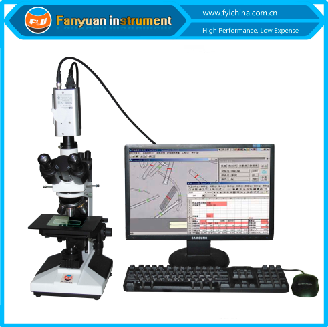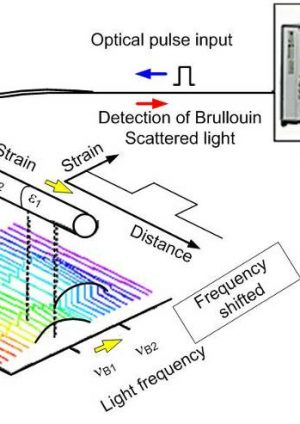Optimize Your Fiber Optic Efficiency: Recognizing Optical Fiber Size Analyser Innovation
The performance of fibre optic systems is seriously influenced by the accuracy of their size, a factor often ignored in the quest of optimum signal honesty. Recognizing the modern technology behind optical fiber diameter analysers reveals the detailed equilibrium in between dimension accuracy and manufacturing top quality.
Significance of Optical Fiber Size
The diameter of optical fiber plays an essential role in determining the efficiency and performance of interaction systems. It affects a number of crucial parameters, including the setting of light proliferation, depletion, and data transfer ability. Larger diameters usually allow for several light modes, assisting in higher information transmission prices. On the other hand, smaller diameters tend to support fewer settings, which can improve signal quality and decrease crosstalk.

Moreover, comprehending the diameter's ramifications can result in cost financial savings by minimizing the requirement for signal amplification and repeaters in considerable networks (optical fibre diameter analyser). Finally, the value of optical fiber diameter can not be overstated, as it directly impacts the total efficiency and reliability of modern-day interaction systems

Just How Diameter Influences Signal Quality
Signal high quality in optical fibre systems pivots substantially on the diameter of the fiber. The diameter affects several key criteria, including depletion, data transfer, and modal diffusion. A smaller sized size can lead to greater attenuation prices, resulting in signal loss as light journeys through the fiber. This attenuation can endanger the integrity of the transmitted information, resulting in a decline in signal top quality, especially over fars away.
Alternatively, larger diameters usually allow for boosted light capture and reduced modal diffusion, boosting signal clarity. In multimode fibers, a larger core size can sustain numerous light modes, however it might also introduce intermodal diffusion, which can weaken signal top quality. Selecting the ideal fibre diameter is crucial for attaining the preferred efficiency in details applications.
Additionally, the communication in between the fibre size and the wavelength of the light made use of plays a critical duty in identifying the efficient transmission range and total signal honesty. Understanding how fibre size influences signal top quality is crucial for network developers and engineers striving to maximize optical fiber systems for dependable, high-speed data transmission.
Review of Diameter Analyser Innovation
In numerous optical fiber manufacturing procedures, accurate measurement of fiber diameter is necessary for ensuring constant efficiency and top quality (optical fibre diameter analyser). Diameter analysers are advanced instruments developed to evaluate the physical dimensions of optical fibers with high precision. They employ sophisticated optical and laser modern technologies to gauge the diameter, ovality, and concentricity of the fiber, hence offering critical information for quality assurance
These analysers can operate in-line throughout the production process or as component of off-line screening protocols. In-line systems enable real-time surveillance, enabling makers to readjust specifications promptly, thus preserving optimum production conditions. Off-line analysers, on the various other hand, offer comprehensive analyses of sets, ensuring that any discrepancies from defined resistances are recognized and addressed.
Diameter analysers significantly add to the reduction of problems in optical fibers, improving general item dependability. By constantly gauging key specifications, these innovations assist in compliance with industry standards and specs. As the need for high-performance optical fibres continues to rise, the role of size analysers becomes progressively vital in attaining the preferred high quality and performance criteria in fibre optic systems.
Key Features of Fibre Diameter Analysers
Although numerous designs of fiber diameter analysers exist, they commonly share numerous essential features that enhance their functionality and reliability. Among the most considerable attributes is high-resolution measurement capabilities, which ensure exact size readings, critical for maintaining top quality control in fiber production. Additionally, several analysers integrate advanced optical sensors developed to discover minute variations in fiber diameter, thus offering vital information for procedure optimization.
Another vital feature is real-time surveillance, enabling operators to get prompt feedback on fibre size throughout the production procedure (optical fibre diameter analyser). This capacity find out this here helps with quick adjustments and minimizes the possibility of problems. Lots of analysers additionally come geared up with user-friendly user interfaces, enabling operators to conveniently navigate through data and settings outcomes
Additionally, durable data storage and evaluation YOURURL.com performances are crucial for tracking historic efficiency trends and guaranteeing compliance with market requirements. Some models even provide connectivity alternatives for assimilation into existing manufacturing control systems, improving total functional efficiency. Last but not least, compact and mobile styles enable adaptable release within manufacturing atmospheres, making sure that quality assurance processes are smooth and efficient. These functions collectively contribute to the efficacy of fibre size analysers in enhancing fibre optic efficiency.
Best Practices for Fiber Optimization

First, routine calibration of optical fiber diameter analysers is essential. This ensures precise measurements and reduces potential disparities that could affect efficiency. Next, maintaining a clean workplace is vital; dirt and contaminants can lead to signal destruction.
Additionally, it is essential to choose fibres that satisfy certain application requirements. This involves examining factors such as depletion, data transfer, and ecological conditions. Proper installation strategies ought to additionally be followed, consisting of preventing sharp bends and excessive stress, which can endanger fiber honesty.
Additionally, using advanced monitoring systems can help with real-time performance evaluations, making it possible for prompt identification of problems. Normal screening and maintenance ought to be performed to ensure that fibres remain within optimal functional specifications.
Last but not least, training personnel on the most recent fiber optimization technologies and methodologies will certainly enhance their capability to carry out reliable approaches. By following these best methods, organizations can substantially enhance the efficiency and life expectancy of their optical fiber systems, guaranteeing efficient Find Out More communication and information transfer.
Verdict
In final thought, the integration of optical fibre diameter analyser technology is critical for making the most of fiber optic performance. By making certain accurate dimensions of fibre measurements, these analysers considerably boost signal high quality and reduce losses throughout information transmission.
Signal quality in optical fiber systems hinges considerably on the diameter of the fiber.In numerous optical fiber production processes, precise dimension of fiber diameter is crucial for making certain constant efficiency and quality. As the need for high-performance optical fibers proceeds to rise, the function of diameter analysers comes to be significantly crucial in achieving the wanted top quality and efficiency standards in fibre optic systems.
These attributes collectively add to the efficacy of fibre size analysers in optimizing fibre optic efficiency.
In conclusion, the assimilation of optical fibre diameter analyser modern technology is important for maximizing fibre optic efficiency.
Comments on “Why Optical Fibre Diameter Analyser Systems Are Important for Engineers”